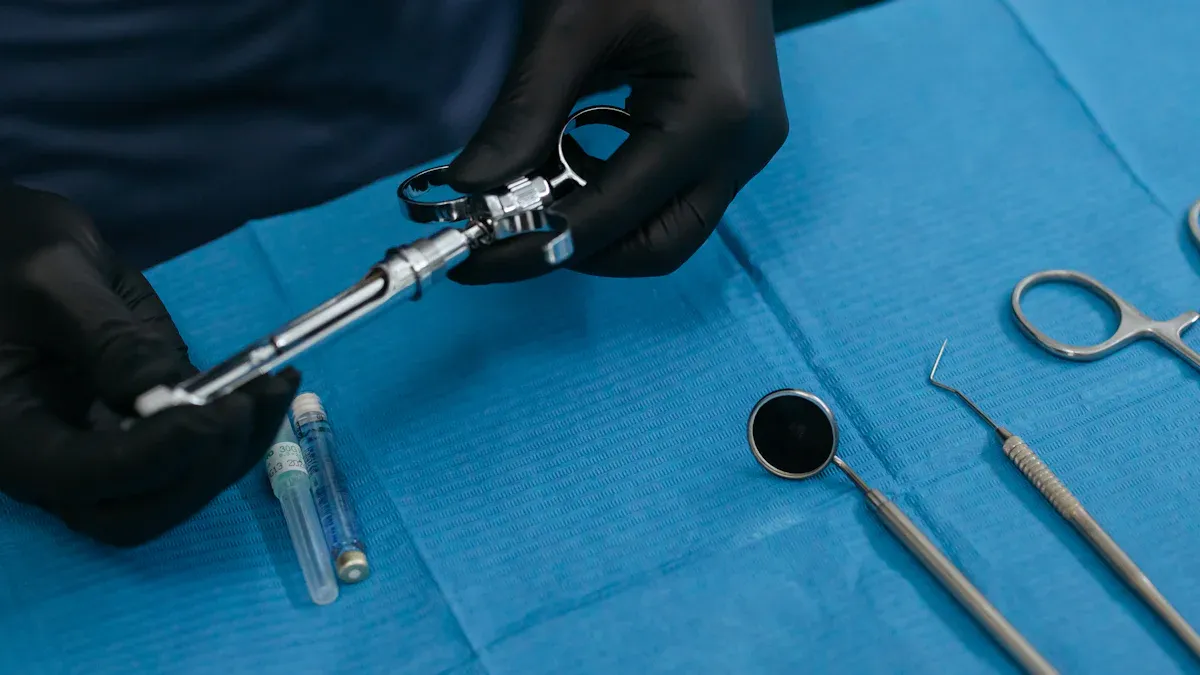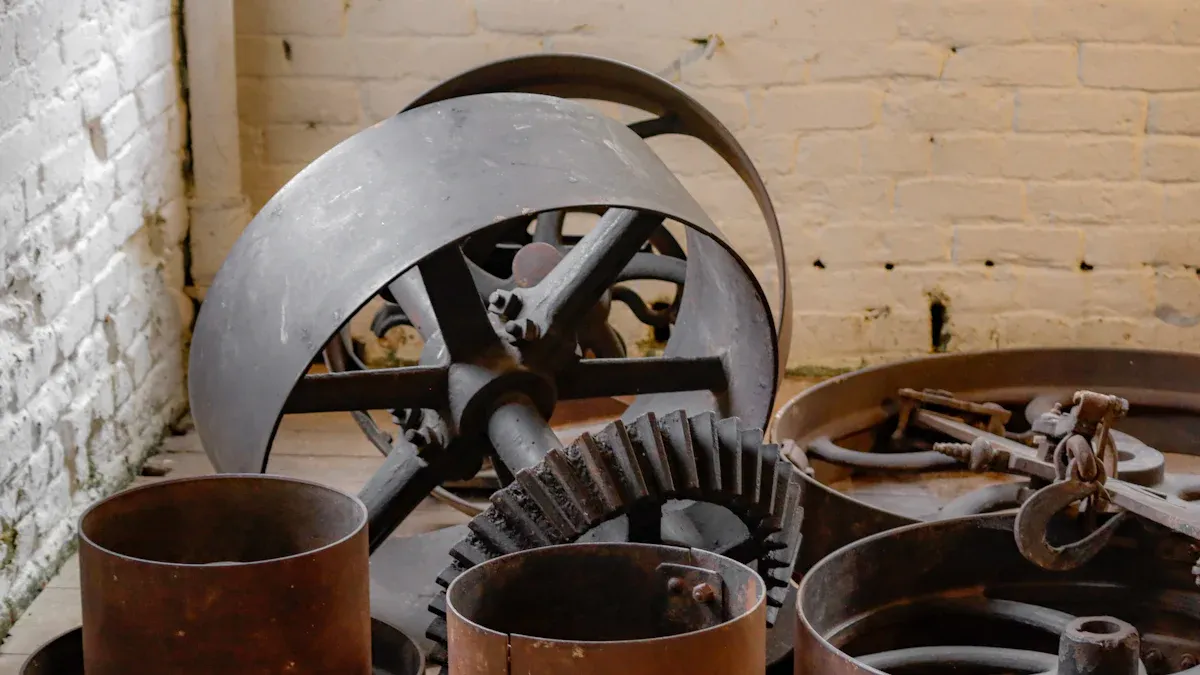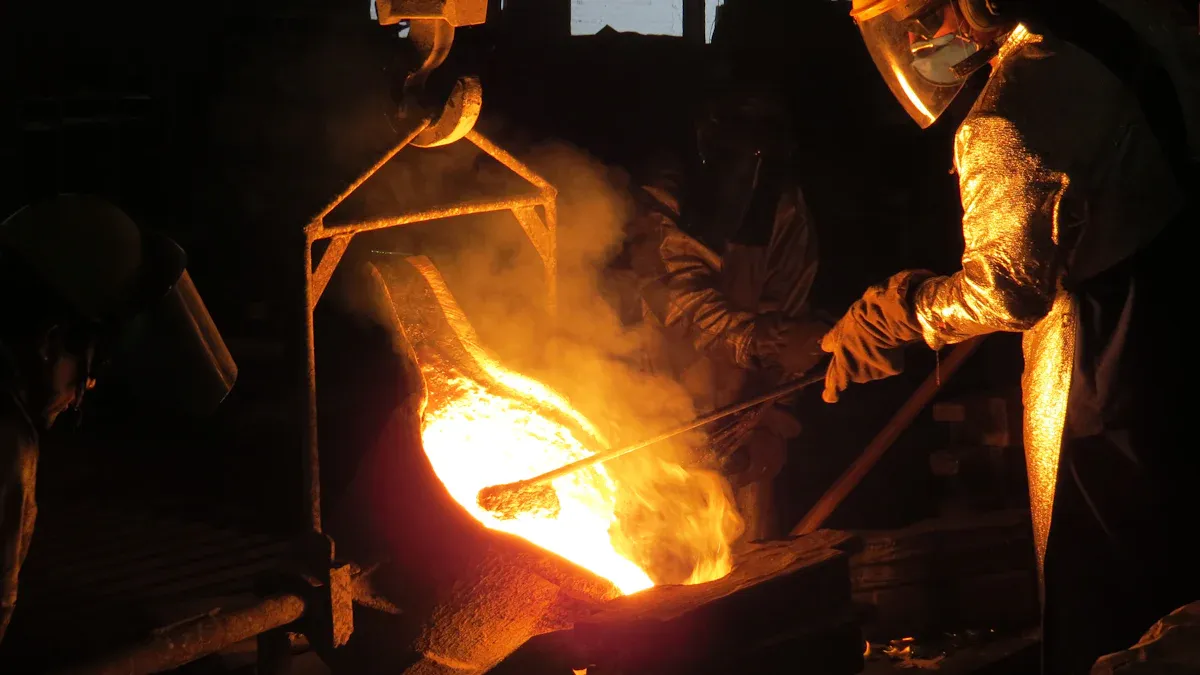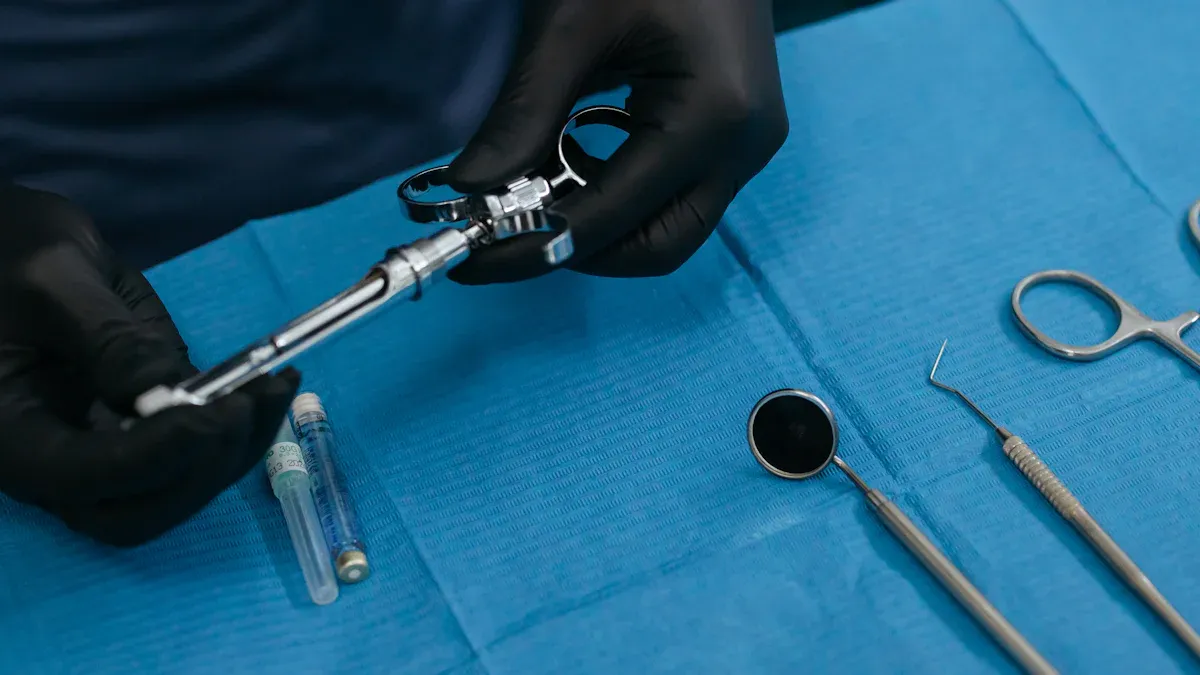Investment casting plays a crucial role in producing medical devices, especially through medical investment castings. This process creates parts with precise shapes and intricate details. Manufacturers commonly use stainless steel, titanium, and cobalt chrome alloys, which are strong and biocompatible. Medical investment castings enhance the quality and safety of medical devices for patients. KEMING offers innovative solutions for medical devices, allowing engineers to design parts that support new ideas and improved patient care.
Key Takeaways
- Investment casting helps make medical parts that are very exact. These parts fit the body well and are safe to use.
- Strong metals like stainless steel, titanium, and cobalt chrome are used. These metals are safe for the body and last a long time.
- The process makes smooth surfaces and tricky shapes. This means less extra work and fewer chances for infection.
- Custom implants can be made fast. This helps patients heal quicker and feel better during surgery.
- New technology and careful checks make sure each part is safe. Every medical part must meet high standards for safety and how well it works.
Investment Casting in Medical Device Manufacturing
Process Overview
Investment casting is very important for making medical devices today. People also call it the lost wax technique. First, a wax pattern is made to look just like the final device. Workers cover this wax shape with ceramic to make a hard shell. When the shell dries, they heat it up. The wax melts and leaves an empty space inside.
Next, hot metal is poured into the empty ceramic mold. The metal cools down and gets hard. Workers then break the ceramic shell to get the finished part out. This way, parts can be made very exact and detailed. Medical investment castings from this process often do not need much extra work.
The lost wax technique has many good points for making medical devices:
- It makes parts that are the right size, which is important for implants that must fit the body.
- The process can make very detailed shapes, which are needed for some implants.
- Many biocompatible metals can be used, like titanium, stainless steel, and cobalt-chromium alloys.
- The parts come out smooth, so they do not need much extra finishing and work well with body tissues.
- Implants can be made special for each person, which helps them feel better and work better.
- Custom implants can make surgeries faster and help people heal quicker.
- Good materials and exact fits help stop problems and lower the chance of rejection.
- The process works for one special implant or small groups, so it is good for personal care and saves money.
KEMING uses new investment casting methods to meet the tough rules for medical devices. Their skill makes sure every part is made right and is high quality.
Materials Used
Picking the right material is very important in investment casting for medical devices. Engineers pick metals that are strong, last long, and are safe for the body. The most used ones are stainless steel, titanium, and cobalt chrome alloys.
- Stainless steel does not rust and is strong, so it is good for tools and some implants.
- Titanium is light and strong. It is very safe for the body, so it is used for joint and dental implants.
- Cobalt chrome alloys are very strong and do not wear out fast. They are used for implants that hold a lot of weight, like hips and knees.
Medical investment castings made from these metals help keep patients safe and devices working well. The casting process lets people use these special metals without losing detail or accuracy.
KEMING is great at making medical investment castings with these strong metals. Their team works with device makers to pick the best metal for each job. This teamwork makes sure devices are safe and work well for patients.
Benefits of Investment Casting for Medical Devices
Precision and Complexity
Investment casting lets companies make very exact parts. Engineers can design parts with tiny details. They can add things like inside threads, splines, and even small words or dates. These details help doctors use the devices more safely. They also help surgeons do their jobs better.
This process can make shapes that other ways cannot. Some implants need curves or empty spaces inside. Investment casting makes these shapes in just one step. This means there is less cutting or welding needed. The parts stay strong and do not break easily.
Investment casting helps use less metal. Engineers only use the metal they need for each part. This saves money and helps the planet. The process works for big groups of parts or just a few special ones. Hospitals can get parts that fit each patient just right.
Surface Finish and Tolerances
Medical device parts need to be smooth. Investment casting makes parts that feel smooth when you touch them. This helps tools and implants work better in the body. Smooth parts are easier to clean and help stop infections.
Investment casting keeps parts close to the right size. Each part matches the plan very well. This means new parts fit and work as they should. Surgeons know every part will work the same way each time.
| Benefit | Impact on Medical Devices |
|---|---|
| High precision | Better fit and function |
| Smooth surface finish | Lower infection risk |
| Tight tolerances | Reliable performance |
| Complex shapes | More advanced device designs |
| Less material waste | Cost savings and sustainability |
Investment casting makes parts that do not rust. These parts last longer in the body. Patients get better faster because the devices work well. Hospitals save money because the devices last longer and do not break often.
Applications in Medical Device Investment Casting Manufacturing

Implants and Prosthetics
Investment casting helps make many implants and prosthetics. Companies use it to make joint replacements like hips and knees. Dental implants also need investment casting for strong shapes. Prosthetic parts, such as sockets and connectors, are made this way too. These parts must fit the body just right. Investment casting lets engineers design parts for each patient. This helps doctors give better care and makes patients more comfortable.
Surgical Instruments
Surgical tools need to be very exact and strong. Investment casting makes things like forceps, clamps, scissors, and handles. These tools must work well in surgery and not rust. Using investment casting means every tool meets tough rules. Surgeons trust these tools because they feel good and work well. The smooth finish from investment casting makes cleaning simple. This helps stop infections. Hospitals can buy many tools or ask for special ones.
Custom Components
Some medical device parts need special shapes or features. Investment casting makes clips, brackets, and other small parts with details. These parts may need to be made in large numbers or just a few. Engineers can change designs fast to meet new needs. Investment casting lets them do this without losing quality. This helps companies solve problems and make better devices.
Investment casting is great because it works for both regular and special parts. It lets companies try new ideas and help patients get better.
Medical Investment Castings Quality and Compliance
Regulatory Standards
Medical device makers must follow very strict rules. These rules help keep patients safe. Groups like the FDA and ISO make these rules. They set high standards for how things are made. Medical investment castings must pass these rules before use in hospitals.
Regulators check every part of the process. They look at the metals and how molds are made. They also check the finished parts. Each device must be strong and not have cracks or holes. Good casting integrity means the part will last longer. It also works better inside the body.
Note: Following these rules keeps patients safe. It also helps doctors, patients, and companies trust each other.
KEMING’s Quality Control
KEMING uses many steps to make sure parts are good. Their team checks each step, from design to the end. They use special machines to test strength and shape. Workers look for small problems that could cause trouble later.
KEMING follows all the rules from medical groups. They keep records for every batch they make. This helps them find and fix problems fast. Their team trains often to learn new rules and ways to work.
- KEMING’s quality control steps include:
- Picking safe metals for the body
- Checking molds and patterns closely
- Testing for strength and how long it lasts
- Final checks for size, shape, and smoothness
Medical investment castings from KEMING are safe and high quality. Their focus on quality helps doctors trust the devices. Patients get better care because the devices work well.
Innovations and Trends in Medical Device Investment Casting
Advanced Techniques
Engineers use new tools and computers to make investment casting better. 3D printing lets them make wax patterns quickly and with more detail. Computer-aided design, or CAD, helps teams build and test parts on a computer before making them. This step saves time and helps stop mistakes. Laser scanning checks if each part is made right. These tools help companies make safer medical devices.
Robots now help with some casting jobs. They move parts and pour metal without shaking. This makes the work safer and more exact. New ceramic materials for molds make smoother surfaces. These smooth surfaces help implants fit better in the body. Companies also use better melting furnaces. These furnaces keep metals clean and strong.
Tip: Using computers and robots helps engineers make custom implants for each patient. This way, people heal faster and feel more comfortable.
Industry Outlook
The future of investment casting for medical devices looks good. More hospitals and doctors want devices that fit each person. Companies use data and smart machines to make these special parts. KEMING is a leader in using the newest casting methods. Their team works with doctors and engineers to fix new problems.
KEMING spends money on research to find better metals and ways to cast. They try new ideas in their labs. They care about quality and safety, so they stay ahead. As rules for medical devices get tougher, KEMING keeps making their process better. They help set new rules for the industry.
Many experts think digital tools and smart machines will change medical devices. KEMING’s work shows how new ideas can help patients and doctors.
Investment casting helps make new medical devices. KEMING gives smart solutions that help keep patients safe.
- This way, companies make detailed and exact parts for implants and tools.
- It lets them make thin walls and small shapes with smooth surfaces.
- Engineers can put many parts together into one piece. This helps stop problems.
- The process works with many kinds of medical materials.
New ideas will let people make even better custom devices. This means patients can get better care.
FAQ
What is investment casting used for in medical devices?
Investment casting helps make exact parts for implants and tools. Engineers use it to create shapes that fit the body well. Hospitals need these parts to give safe care to patients.
Why do medical device makers choose stainless steel, titanium, or cobalt chrome?
These metals do not rust or wear out fast. They are safe to use with body tissues. Doctors trust these metals because they last and keep people safe.
How does investment casting improve patient safety?
Investment casting makes smooth and correct parts. These parts fit well and help stop infections. Surgeons trust them because they meet high quality rules.
Can investment casting make custom implants for each patient?
Yes. Engineers use computers to design special implants. Investment casting then makes these shapes for each person. Patients feel better and heal faster with these implants.
What quality checks does KEMING perform on medical castings?
KEMING checks every step, from picking metals to final tests. The team uses special machines to check strength, size, and smoothness. This makes sure every part is safe for medical use.




